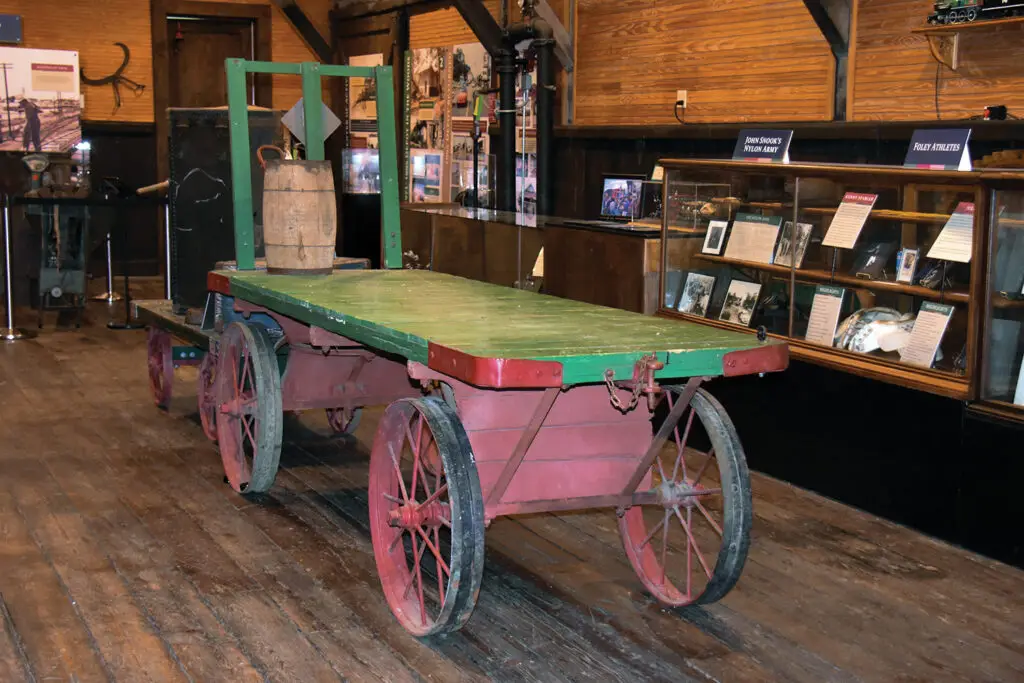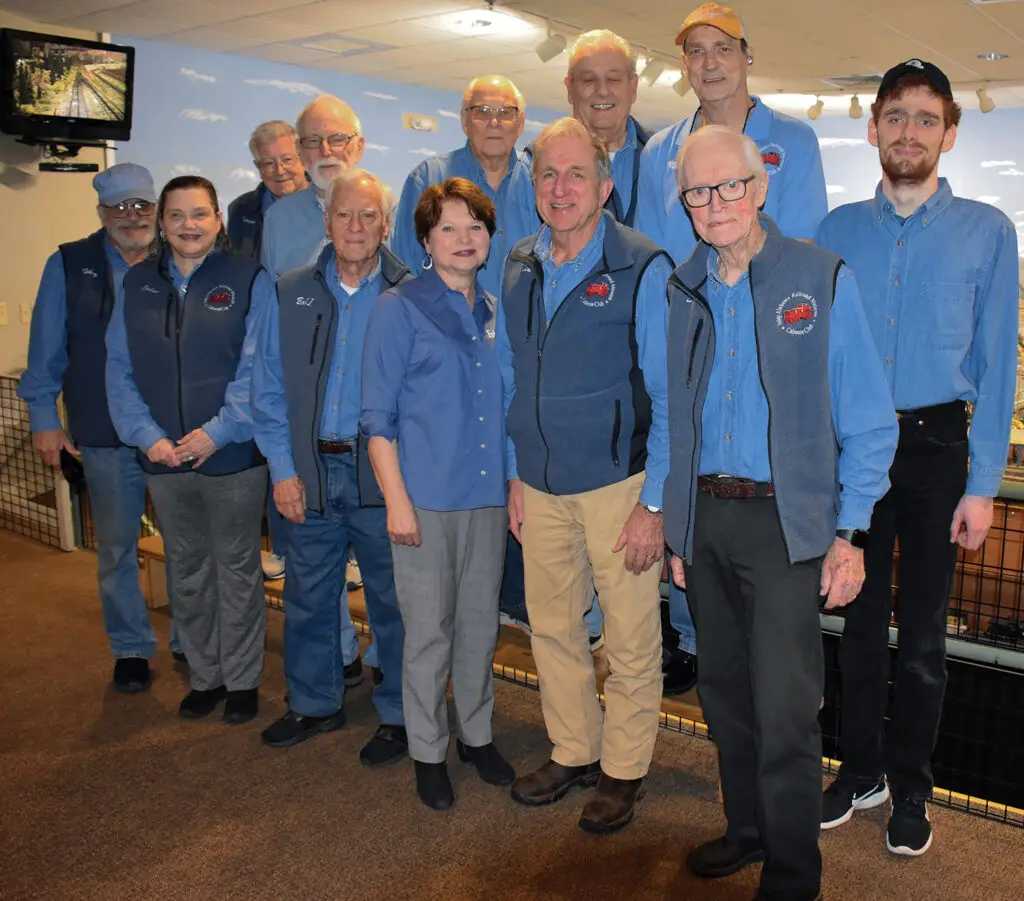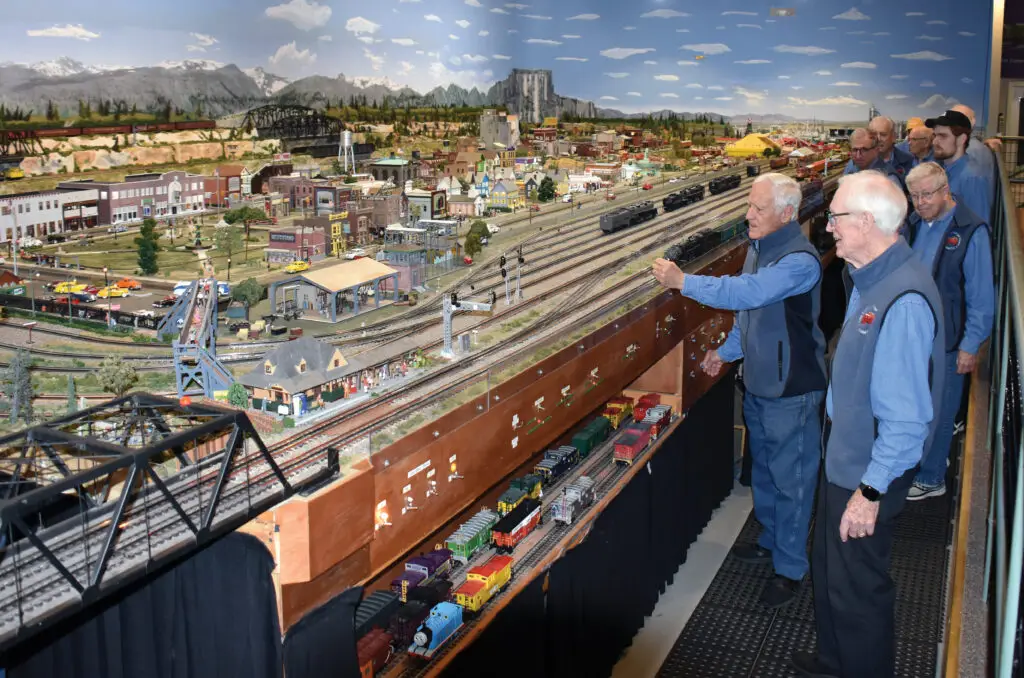Foley Railroad Museum and Train Exhibit attracts visitors
By Emmett Burnett

In the heart of Foley, Alabama’s Heritage Park, stands a train depot, former rail stop, and town fixture since 1909. Well, not exactly. For decades it stood elsewhere and then returned.
Confused yet? Don’t be. For the story behind Foley’s depot turned museum is one of Alabama’s most unlikely tales and starts with the death of U.S. President William McKinley.
Today the town’s former depot is the Foley Railroad Museum and Model Train Exhibit. Memorabilia, exhibits, photographs, and more await visitor discovery. But one of the most intriguing artifacts displayed at the building is the building itself. Here is the story of the little depot that could.
In September 1901, Chicago native John B. Foley was traveling to the funeral of the aforementioned 25th President of the United States. While en route, a railroad land agent told him about amazing south Alabama land for sale. Foley was interested.
A year later he visited the “amazing land,” which would one day share his name. “Mr. Foley came down, looked around, and liked what he saw,” says LaDonna Hinesley, marketing director for the City of Foley. “He bought 40,000-plus acres.”
The Chicago investor formed the Magnolia Springs Land Company to sell parcels of his newly acquired property. But there was a problem. The railroad connected Chicago to Bay Minette but there was no spur joining Foley. He needed train access to sell his lots.
Foley helped with his own money in joining Bay Minette to Foley by rail. And then came the train depot. The original was built in 1905 but was destroyed by fire. A new one was built in its place, opening in 1909.
“For decades, this was the center of town,” Hinesley adds, as we tour the building withstanding the test of time. “Settlers first came here by train. Farmers took their crops to market here. Families and businesses grew around this depot.”
All was well until the 1970s when the L&N Railroad discontinued train service to Foley. The depot was destined for demolition until a wealthy area resident came to the rescue.
John Snook, who owned the Gulf Telephone Company, offered to buy the depot. He and L&N settled on a price with one condition. Snook must move the building. He agreed to the terms and purchased the depot for $1.

“He bought the building, cut it in half, placed it on trucks, and unloaded it in the woods of Magnolia Springs,” Hinesley says. “Snook used the building for a warehouse initially but it lay vacant for years, buried in the woods.”
Some thought Mr. Snook made a terrible mistake, buying and moving the old depot. He replied to skeptics, “One day the City of Foley will want this building. They just don’t know it yet.” He was correct.
In 1991 Mr. Snook deeded the building to Foley. The town also received grant money to return the Depot from Magnolia Springs to the very spot it stood all those years.
In 1995 the train station’s journey was complete. It was repaired, refreshed, and reopened for visitors. The museum grew from a good idea to a tourist site of 20,000 plus visitors annually.
“I bet when we send our numbers to the state tourism people in Montgomery, they must think we are lying,” says Hinesley, laughing. The Model Train Exhibit also has 20,000 visitors a year, even though it is open three days less than the depot museum is.
Do not compare Foley’s model train sets with the one you got for Christmas. Theirs encompasses a 20-by-60 foot layout with endless tracks, 32 locomotives, and 6 or more trains.

In 2004 the city accepted the original trains from Montgomery donor Alan Goldman. The model trains, hugely popular with children ages 5 to 85, are maintained and operated by about 20 volunteers collectively known as the Caboose Club.
Lifelong Foley resident Bob Irwin is one such volunteer. He remembers the early days of the model train exhibit. “Volunteers took it apart with chainsaws and it sat in storage for a year,” Irwin recalls. The city stored the layout while a building was built to house it. Construction was longer than anticipated due to a contractor shortage caused by Hurricane Ivan. When the building was completed, the trains’ layout was assembled which required a year. Foley’s Model Train Exhibit opened to the public in February 2007. The exhibit has received many accolades, including a September 2019 recognition from Classic Toy Trains Magazine. The national publication described Foley’s miniatures as “a museum quality exhibit, one of the top public exhibits of toy trains in the country.”
The set replicates scenes of Foley from the 1940s, including the Foley Hotel, Crosby’s Drugstore, the Holmes Hospital, Foley’s Depot building and other landmarks.
Visitor reaction to the scale models is predictably delightful. “We let children press a button to blow the whistle,” adds volunteer Doc Holiday. “Their eyes light up like the trains.”
One volunteer for the little trains has family history with the big trains. He is John B. Foley III, 80 year-old-grandson of the town’s namesake.

“I am not a train expert, but I enjoy working with these other guys,” he says, looking over the vista of miniature railroads and buildings. To him, the volunteer work in both museum and model train displays are important. The younger Foley sums it up: “I believe if not for the railroad, this city would not be here.”
Fortunately for the rest of us, the depot now museum is here, after burning to the ground, being rebuilt, removed from the city, and returning back to it.
John Foley died and never lived in the city named for him. John Snook died in 1994 and never saw the depot moved to its present location. The train depot owes its existence in part to the elder Foley, Mr. Snook, and others, who were all aboard. The next generation still is.
The Foley Railroad Museum is open Monday through Saturday, 10 a.m. to 3 p.m. The Model Train Exhibit is open Tuesday, Thursday and Saturday, 10 a.m. to 2 p.m.
In addition, children and their parents enjoy The Ebert Express II, a small custom-built train, offering rides around Heritage Park. The Ebert Express II is open Tuesday, Thursday and Saturday, 10 a.m. to 2 p.m. during the summer months. It is open Saturdays, 10 a.m. to 2 p.m. during fall, winter and spring.
All attractions are free but donations are appreciated.
For more information, visit foleyrailroadmuseum.com.ν




